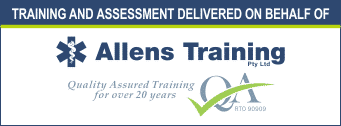Ever thought about the state of your workplace first aid? If your mental image involves a dusty box tucked away in a forgotten corner, it’s time for a change! Providing first aid is much more than just having an old kit lying around the office.
It can be more involved than you think, but safety is worth it. Having comprehensive first aid policies in place at Brisbane workplaces is essential for ensuring the safety and well-being of all employees. So, let’s dive into the essential procedures and policies you need to know.
First Aid Plan
Different workplaces have different needs, so it’s good to come up with a plan that takes into account the nature of the work, potential hazards, and the size and composition of your workforce.
For example, an office environment may have different risks compared to a construction site or a restaurant kitchen.
It’s not a one size fits all approach. Figuring out how your business will approach meeting first aid standards is important. So where do you begin?
When you create a specific plan, you consider all aspects of your business operations and workforce. This personalized approach ensures that you are prepared for the unique challenges and potential emergencies that your specific business might face. Tailoring your first aid arrangements involves:
- Assessing the nature of your work and identifying specific risks.
- Ensuring that your first aid kits contain items relevant to those risks.
- Placing first aid kits and equipment in strategic locations.
- Making sure you have qualified first raiders.
- Consider training non-qualified staff in basic first aid to significantly increase overall preparedness.
By working to a specific plan, you’ll be safer than adhering to the bare minimum, and that matters.
Risk Management Approach
Tailoring first aid provisions based on specific workplace circumstances involves conducting thorough risk assessments. This helps identify potential hazards and determine the necessary measures to mitigate them.
For instance, a construction site may need specific equipment and training for dealing with severe injuries like fractures or heavy bleeding. On the other hand, an office might focus more on dealing with minor injuries and ensuring everyone knows basic first aid. Regular reviews and updates to these provisions keep them relevant and effective.
The Code of Practice: Key to Forming Procedures
Now, let’s talk about the Code of Practice for First Aid in the Workplace. This document is what makes it easy to ensure you you have everything covered when it comes to first aid in your workplace. You can find more detailed information on the Queensland Government website, but here are the key elements broken down:
First Aid Kits
First aid kits are not just about having a box with bandages and antiseptics. The contents should be tailored to the specific risks associated with your workplace. For example, a kitchen might need additional burn treatment supplies, while an office might require more items for minor cuts and headaches.

Kit Placement
The location of first aid kits is just as important as their contents. Kits should be easily accessible to everyone in the workplace. Think about common areas, high-risk zones, and places where employees spend most of their time. Accessibility is crucial in an emergency when every second counts.
Trained Staff
Having trained first aiders is essential. The Code of Practice suggests ratios such as one first aider for every 50 workers in low-risk areas and one for every 25 in high-risk areas. This ensures that there are always enough people available to provide immediate assistance if needed.
Periodic Review
Regularly reviewing the contents of your first aid kits and the number of trained staff is vital. Over time, items can expire, and the workplace dynamics might change, requiring more or fewer first aiders. Keeping everything up-to-date ensures ongoing safety and compliance.
Risk Management Approach
Tailoring first aid provisions based on specific workplace circumstances involves conducting thorough risk assessments. This helps identify potential hazards and determine the necessary measures to mitigate them.
Conducting Risk Assessments
A thorough risk assessment is the foundation of an effective first aid policy. This involves evaluating your workplace to identify potential hazards and assess the likelihood and severity of various types of injuries. The Queensland Government provides a sample risk assessment that you can use as a template.

Examples of Tailored Provisions
- Restaurant: Additional burn treatment supplies and training on handling burn injuries.
- Construction Site: Equipment for severe injuries such as fractures and training for heavy bleeding.
- Chemical Factory: Eye wash station for potential spill incidents.
Regular reviews and updates to these provisions keep them relevant and effective.
Emergency Plans
A comprehensive emergency plan is essential for any workplace. It should cover various scenarios, including medical incidents, fires, and chemical spills. Let’s break down what a robust emergency plan should include:
Medical Incident
Imagine an employee collapsing due to a suspected heart attack. The emergency plan should outline immediate steps, such as calling emergency services, performing CPR if trained, and using an Automated External Defibrillator (AED) if available.
Fire
In the event of a fire, like one starting in a restaurant kitchen, the plan should include evacuation procedures, designated assembly points, and clear communication channels to ensure everyone knows what to do and where to go.
Chemical Spill
For workplaces like laboratories, a chemical spill could be hazardous. The emergency plan should detail response procedures, including immediate evacuation, use of protective equipment, and contacting emergency services specialized in handling hazardous materials.

Conclusion
Providing first aid and creating a culture of safety in the workplace is a great way to show that you care. With a little bit of thinking, you can make first aid not a box you tick, but something that saves lives.
We’d love to work with you to provide first aid training to your staff. Book a course today. It’s cost effective, practical and convenient. You’ll see why we are Brisbane’s favourite first aid provider.






